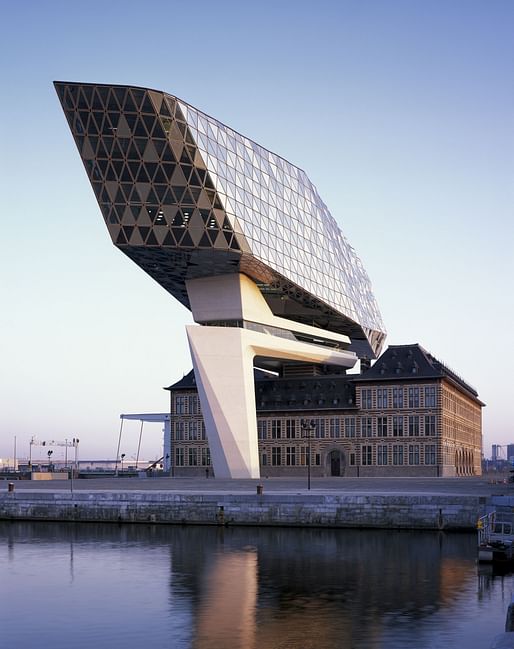

Unlike the toxic culture of open international competitions, which see countless architects waste days of unpaid labour to compete in a beauty contest of novelty forms, the Open Call is focused – and paid. The democratic process has seen Pritzker prize winners drawn alongside recent graduates, unheard-of elsewhere. Unlikely as it may seem, the scheme has made this small part of northern Belgium home to some of the best new public buildings in the world. — The Guardian
The Guardian critic used Florian Heilmeyer’s new book, Celebrating Public Architecture: Buildings from the Open Call in Flanders 2000–2021, as a means of introduction to the system that was first enacted in 2000. Heilmeyer’s aim is to advance the notion that it “prove[s] that public architecture can actually be daring, thought-provoking, cooperative, and well-done at the same time.” Wainwright thoroughly concurred with the assertion, adding his own opinion that a shift towards a more democratic process could benefit the health and safety of his own country.
“It’s not hard to see why, given the current state of UK procurement culture,” he wrote of the controversial British way of awarding public procurements. “As the Grenfell inquiry has made all too clear in week after depressing week, the process through which public authorities procure building work has become riddled with lethal incompetence and institutionalised negligence.” Wainwright adds: “It is a process of contractual buck-passing that sees a project divided into numerous separate 'packages,' from which the maximum number of consultants can profit — while the public loses out on quality, safety and value.”
1 Comment
Very interesting! How do public procurement work in most American cities? It seems more difficult for young firms in the US to access such opportunities to design public buildings.
Block this user
Are you sure you want to block this user and hide all related comments throughout the site?
Archinect
This is your first comment on Archinect. Your comment will be visible once approved.